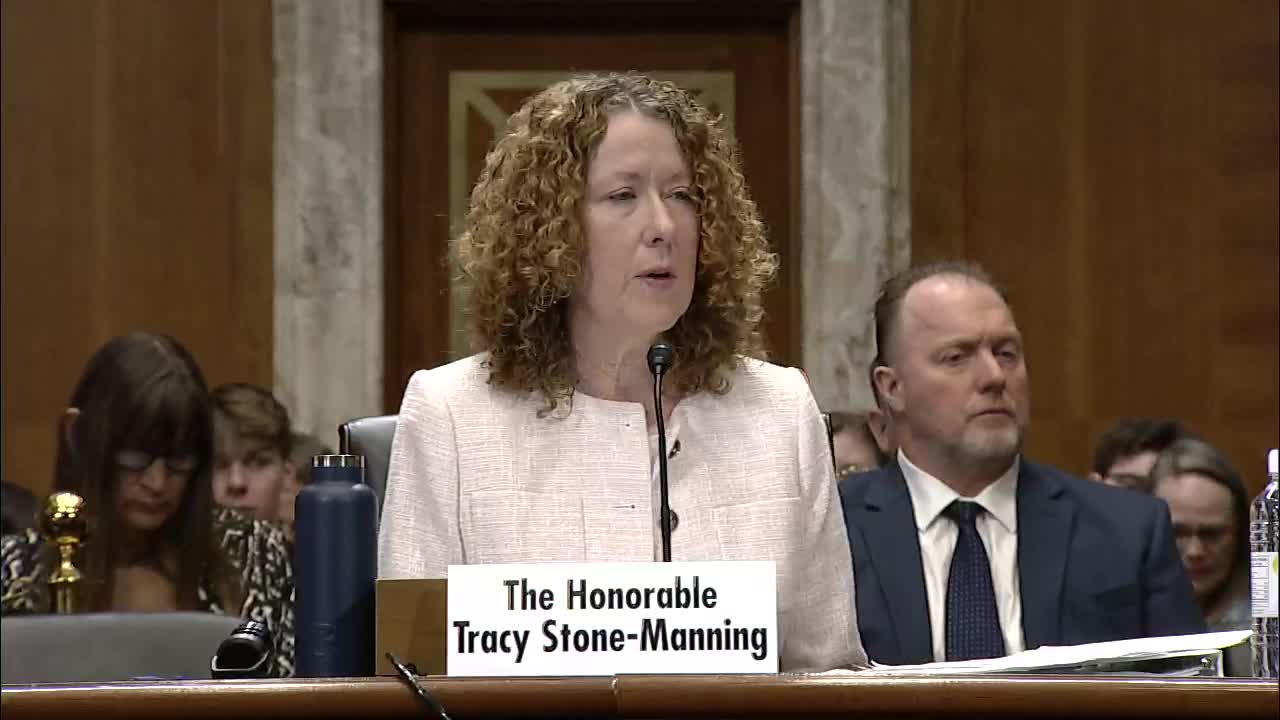BLM faces backlash over public lands management decisions
June 13, 2024 | Energy and Natural Resources: Senate Committee, Standing Committees - House & Senate, Congressional Hearings Compilation

This article was created by AI summarizing key points discussed. AI makes mistakes, so for full details and context, please refer to the video of the full meeting. Please report any errors so we can fix them. Report an error »

In a recent government meeting, officials discussed critical issues surrounding public land management, renewable energy development, and the need for securing critical minerals essential for a clean energy transition. The Bureau of Land Management (BLM) emphasized its collaboration with state fish and game agencies to guide development while adhering to land health standards. The newly proposed public lands rule aims to facilitate renewable energy projects by allowing mitigation leasing on public lands, providing a consistent framework for energy companies to offset their environmental impacts.
However, concerns were raised about the U.S. falling behind in securing critical minerals like lithium and copper, which are vital for clean energy technologies. BLM officials acknowledged the challenges posed by the 1872 mining law, which limits their ability to proactively select mineral projects. Despite these constraints, they reported progress, having permitted five critical mineral mines during the current administration, including a significant lithium project expected to supply 20% of the world's demand.
The meeting also highlighted the increasing public interest in outdoor recreation on BLM lands, with a record 82 million visitors last year. In response, BLM is developing a \"recreation blueprint\" to manage the growing demand for outdoor activities while addressing funding challenges. Currently, BLM receives significantly less funding per visitor compared to other federal land management agencies, prompting a call for partnerships to enhance resource management.
Senator Lisa Murkowski expressed frustration over perceived restrictions on development in Alaska, particularly regarding the BLM's handling of the Central Yukon Resource Management Plan and the status of PLO 5150, which affects the TAPS Pipeline Corridor. She criticized the agency for not lifting the land order as previously promised, leading to concerns about energy and mineral security in her state.
In contrast, Senator Ron Wyden highlighted a collaborative effort in Oregon to address land use conflicts between ranchers and environmentalists, specifically regarding grazing practices. He underscored the importance of maintaining this goodwill to ensure that conservation and grazing can coexist effectively.
The discussions reflect ongoing tensions between environmental conservation efforts and the need for resource development, as officials navigate the complexities of land management in the face of increasing public demand and geopolitical challenges.
However, concerns were raised about the U.S. falling behind in securing critical minerals like lithium and copper, which are vital for clean energy technologies. BLM officials acknowledged the challenges posed by the 1872 mining law, which limits their ability to proactively select mineral projects. Despite these constraints, they reported progress, having permitted five critical mineral mines during the current administration, including a significant lithium project expected to supply 20% of the world's demand.
The meeting also highlighted the increasing public interest in outdoor recreation on BLM lands, with a record 82 million visitors last year. In response, BLM is developing a \"recreation blueprint\" to manage the growing demand for outdoor activities while addressing funding challenges. Currently, BLM receives significantly less funding per visitor compared to other federal land management agencies, prompting a call for partnerships to enhance resource management.
Senator Lisa Murkowski expressed frustration over perceived restrictions on development in Alaska, particularly regarding the BLM's handling of the Central Yukon Resource Management Plan and the status of PLO 5150, which affects the TAPS Pipeline Corridor. She criticized the agency for not lifting the land order as previously promised, leading to concerns about energy and mineral security in her state.
In contrast, Senator Ron Wyden highlighted a collaborative effort in Oregon to address land use conflicts between ranchers and environmentalists, specifically regarding grazing practices. He underscored the importance of maintaining this goodwill to ensure that conservation and grazing can coexist effectively.
The discussions reflect ongoing tensions between environmental conservation efforts and the need for resource development, as officials navigate the complexities of land management in the face of increasing public demand and geopolitical challenges.
View full meeting
This article is based on a recent meeting—watch the full video and explore the complete transcript for deeper insights into the discussion.
View full meeting